Are you a tea lover? Do you like matcha? Do you know that the Japanese not only love drinking tea, but there are also activities centred around tea? The Japanese tea ceremony, or sadō/chadō (茶道), is an important cultural activity in Japan. It is a ceremonial preparation and presentation of Japanese powdered green tea—matcha (抹茶).
The tea ceremony is essentially a process of searching for peace in your mind, and it is crucial to learn the history and practice of the Japanese tea ceremony to become a Japanese cultural expert. Let us get things started and explore the fascination of the tea ceremony together.
Find out about modern fashion in Japan, kimono culture, jikkyousha, the weeaboo culture, ninja, geisha, samurai, horror legends, and folktales.
Origin of the Tea Ceremony
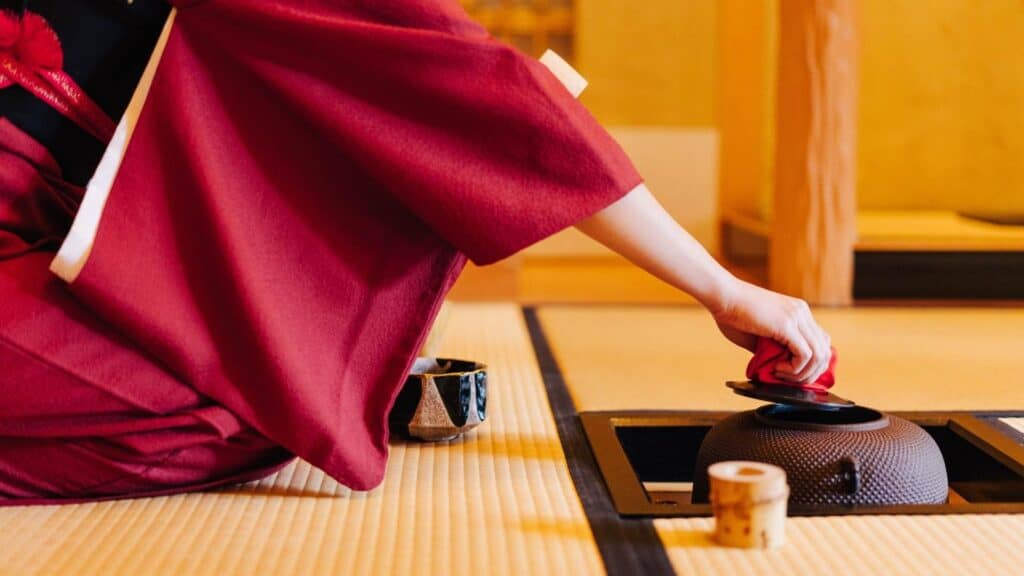
No doubt that tea is the most important element of the tea ceremony. Green tea was first brought to Japan from China, where there was documentation of tea in the 4th century. The introduction of the tea ceremony in Japan can be dated back to the 8th century.
As you may have expected, the ceremony in the 8th century is very different from the ceremony today. The tea ceremony nowadays originated from Zen Buddhism. One of the key influencers is a Chinese author called Lu Yu. During the Tang dynasty, Lu Yu wrote a book called The Classic of Tea (茶经). This work is the first monograph on tea available in the world.
By the end of the 12th century, a Buddhist priest, Myōan Eisai/Yōsai (明菴栄西), who was known for founding the Japanese line of the Rinzai school of Zen Buddhism, first introduced the concept of tencha (点茶). Essentially, tencha means mixing powdered matcha with hot water. This is the prototype of today’s tea ceremony, despite it being first used as a religious ritual. It is worth noting that at the time, tea was prepared for priests and the upper class only.
It was not until the Muromachi period that tea became an everyday beverage that started to become accessible to everyone. There are two historical figures that significantly influenced the development of tea ceremonies: Murata Jukō (村田珠光), the founder of the Japanese tea ceremony, and Sen no Rikyū (千利休), who is generally considered the most influential person of the Japanese tea ceremony.
For Jukō, the most important values in his tea ceremony include kin (reverence), kei (respect), sei (purity), and jaku (tranquillity) (pp. 30 in Jennifer Anderson’s An Introduction to Japanese Tea Ritual).
As for Rikyū, he is a figure that has often been portrayed in popular culture. There are movies and games about him, calling him the tea master. His four central values are similar to Jukō’s but slightly modified: harmony (和, wa), respect (敬, kei), purity (清, sei), and tranquillity (寂, jaku).
Tea Ceremony Equipment
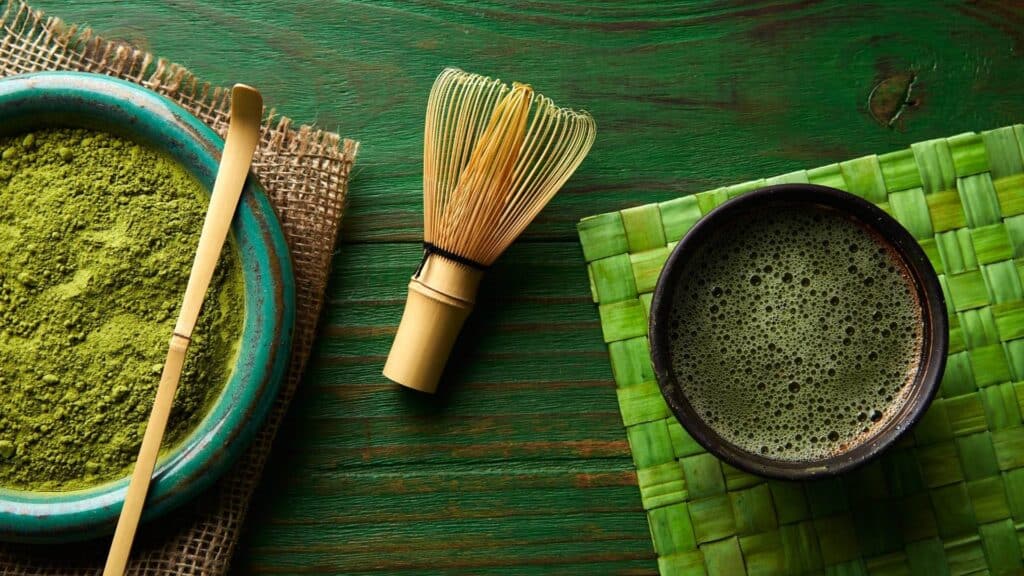
The term for equipment for a tea ceremony is called chadōgu (茶道具). Although the exact utensils that will be used during a tea ceremony vary, there are some essential elements, including:
- Chawan (茶碗) (tea bowl): Chawan originally came from China and was first introduced to Japan by the tea master Rikyū. He designed the first-ever bowl specifically used for the Japanese tea ceremony.
- Cha-ire (茶入) (tea caddy): Cha-ire is used to prepare thick tea.
- Chakin (茶巾) (hemp cloth): Chakin is used by the host of the ceremony to clean the chawan after the guests have enjoyed the tea prepared. Thick and thin tea require different types of chakin to clean.
- Chasen (茶筅) (whisk): The material for chasen is natural bamboo. Around 90% of chasen in Japan come from Takayama town in Nara prefecture.
- Chashaku (茶杓) (tea scoop): The tea scoop or chashaku is made from a single strip of bamboo. It is used to place the powdered matcha into the chawan.
- Kama (釜) (kettle): Kama is usually round-shaped and is used to boil water for making tea.
The tea ceremony is not just about taste but also an aesthetic performance. Every placement of the equipment is from the guests’ angle, instead of the host’s. While enjoying the tea ceremony, you might also explore affordable Michelin-starred restaurants in Tokyo to further indulge in the cultural richness of Japan.
Team Ceremony Procedure

As I have mentioned above, there are different schools that follow different protocols. A formal tea ceremony is a refined practice that can take hours. Briefly speaking, there are several steps that you will find in almost any ceremony that you attend:
1. The tatami room in which the ceremony will take place is properly cleaned and prepared by the host after sending the invitation to the guests. Note that an invitation is a must because only guests with a formal invitation can attend a tea ceremony.
The choice of the invitation also represents the host’s aesthetic value. As for the room, it will be decorated in accordance with the season and time of the day.
2. The guests enter the tearoom on the date they have arranged. The guests have to sit in a specific order, as there is the main guest, or Shokyaku, who communicates with the host on behalf of other guests and formally acknowledges and appreciates the effort of the host.
3. The host ritually cleans the tools after all guests are properly seated.
4. The host prepares a thick matcha tea.
5. A thin matcha tea is prepared.
6. The host cleans the tools used.
7. The guests express their appreciation and gratitude to the host and depart.
The procedure of a tea ceremony can be quite different depending on whether it is hosted during the summer or winter season. After the ceremony, you might want to visit some affordable Michelin-starred restaurants in Tokyo to continue your cultural exploration.
Experience the Japanese Tea Ceremony Personally
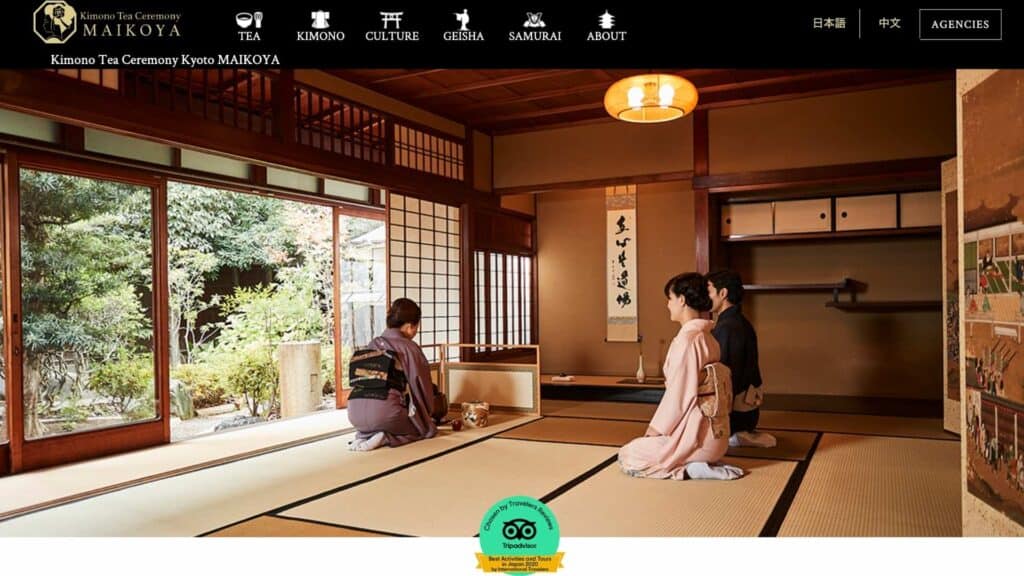
Yes, the tea ceremony is not excluded from foreigners; as a tourist or newcomer in Japan, you have the opportunity to attend a tea ceremony of your choice. Many organisations in Japan offer varying tea ceremonies, and you can choose which one to go for depending on their different focuses and degrees of formality.
You don’t have to worry about the potential language barrier if you don’t speak Japanese, as there are several organisations offering tea ceremonies in English. Here is a link to one of the most popular destinations.
The tea ceremonies offered there are relatively shortened from a very formal one; it is nevertheless a good experience for starters. If you are not in Japan but still love to experience a tea ceremony, you can book one online.
Although you won’t be able to taste the tea, you can still learn the history and concepts of an authentic Japanese tea ceremony and possibly practise it on your own. Following your tea ceremony experience, exploring affordable Michelin-starred restaurants in Tokyo could be a delightful addition to your trip.
What to Expect When Attending a Tea Ceremony
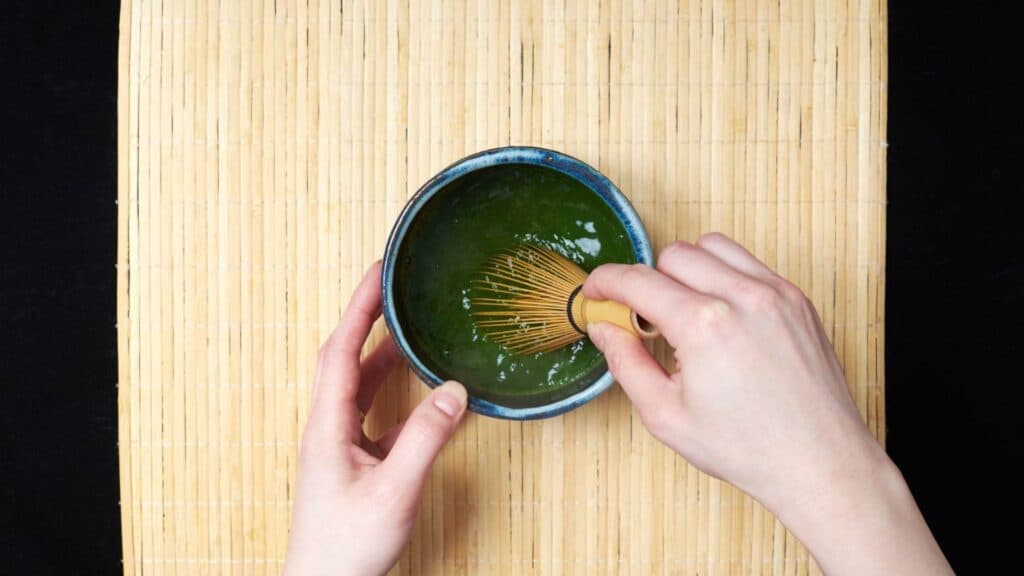
As you may expect, different tea ceremonies from different schools and organisations have varying rules. But don’t worry – you are not expected to be an expert and know it all like a tourist. After all, you are there to experience and learn. It is nevertheless important to bear some points in mind to show your respect for this ritual.
First, a tea ceremony is a formal event, meaning that you should dress accordingly. You don’t need to wear anything too fancy, but you are expected to wear something plain and modest. You should not wear strong perfumes that may distract the ceremony. Second, you need to bow before entering the tatami room where the tea ceremony takes place. When you enter the room, you need to bend over to show your humility.
Ideally, you will sit in a seiza position. Third, before you enjoy the tea, you will be served a Japanese sweet. You are expected to eat the sweet before enjoying your tea. After you finish your tea, you are expected to bow again to the host to express your gratitude.
Following these guidelines will enhance your experience, making it more enjoyable and respectful. If you are looking to enhance your culinary journey, visiting affordable Michelin-starred restaurants in Tokyo can complement your cultural exploration.
Embrace the Tranquillity of the Tea Ceremony
As a big tea lover, I hope this article has sparked your interest in the tea ceremony. Let me know if you have already attended a tea ceremony and your thoughts about it. If you haven’t experienced it, I would certainly recommend checking out one. Many of my friends were surprised after going to a tea ceremony.
Attending a tea ceremony is a truly peaceful experience that clearly contrasts the busy, modern everyday life. You will see that the purpose of a tea ceremony is not simply about enjoying tea; you will get a sense of the very basis of the Japanese life philosophy and aesthetics.
The hope of many hosts is that besides receiving and enjoying tea, their guests can find harmony and tranquillity during and after the tea ceremony. And for a complete experience of Tokyo’s culinary delights, don’t miss out on affordable Michelin-starred restaurants in Tokyo.

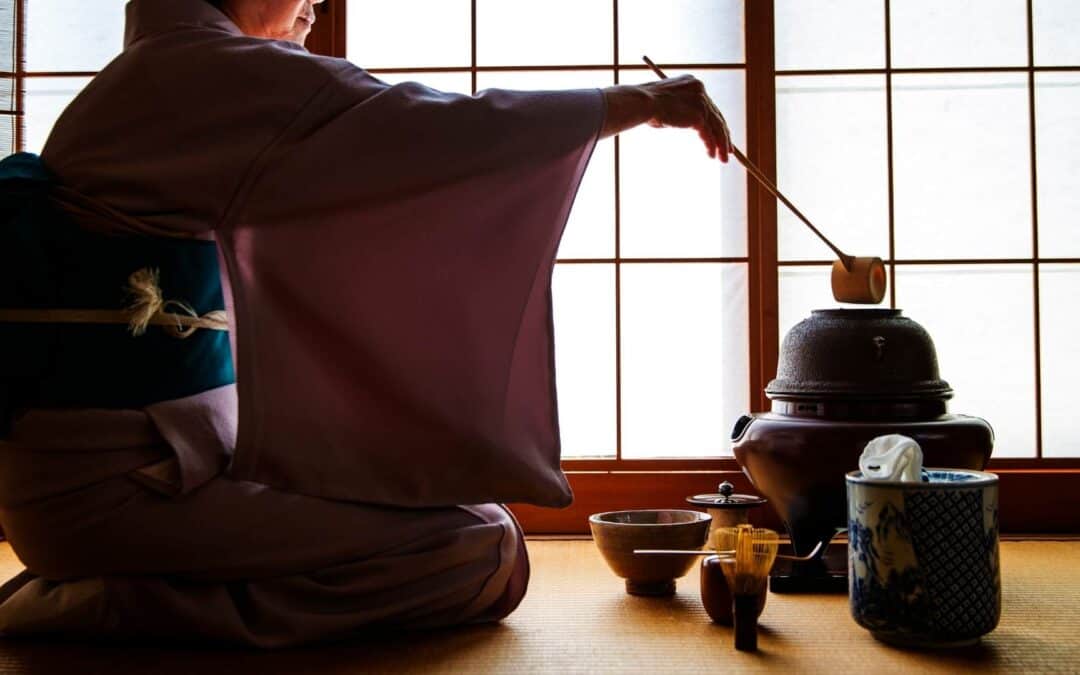
Trackbacks/Pingbacks